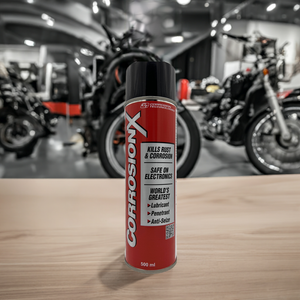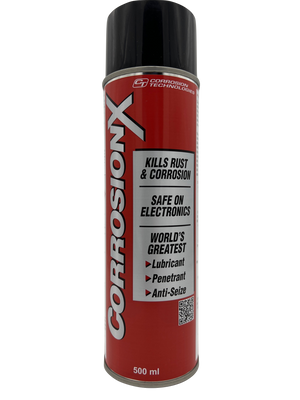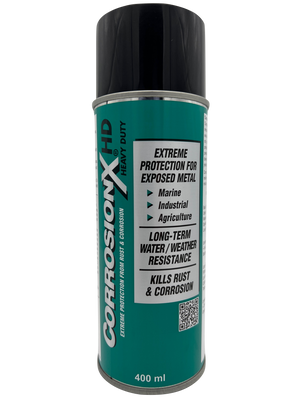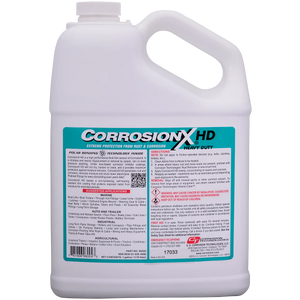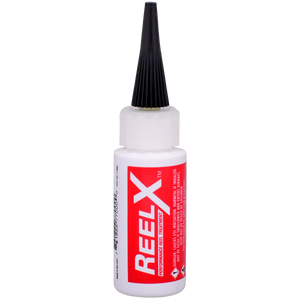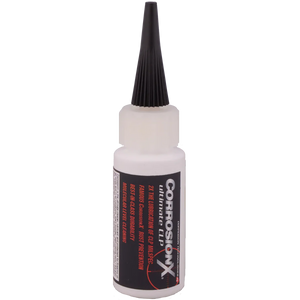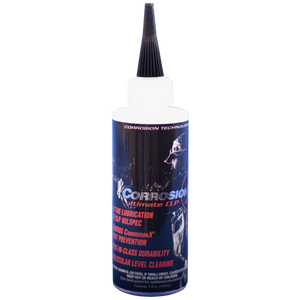Understanding the Legacy of Antique Firearms
The allure of a tangible piece of history
When you hold an antique firearm, it’s like grasping a time capsule that bridges the gap between past and present. Unlike modern firearms—sleek in design and engineered with advanced alloys—an antique firearm has a soul shaped by historical events, personal stories, and craftsmanship techniques that may not exist anymore. There’s a romantic aura around them, almost as if you can sense the hands that once carried it, the battles it witnessed, or the quiet corners of family homes where it was kept safe.
For many collectors, the appeal of antique firearms is not just about their potential monetary worth. It’s also about the emotional value these guns carry. Some are family heirlooms passed down through generations, often accompanied by stories that capture defining moments in ancestral history. Others are discovered by enthusiasts who relish the thrill of uncovering artifacts in auctions or estate sales. Museums also treasure antique firearms for their educational value, using them to illustrate shifts in military technology, craftsmanship, and global trade.
Emotional and cultural importance
On top of their practical role as historical artifacts, antique firearms often serve as cultural signposts. They reflect the evolution of warfare, law enforcement, sport shooting, and even artistry. In some cultures, an elegantly decorated flintlock might symbolize status or craftsmanship traditions that were revered in a particular region or era.
Antique firearms can also illuminate social and economic histories—for instance, the distribution of a particular rifle model might reveal trade routes, alliances, or conflicts between nations. As a result, every scratch on the barrel or patina on the stock can act like a puzzle piece, helping historians assemble a broader picture of human development.
An investment in preservation
Collecting antique firearms isn’t just about adding another showpiece to your mantel or museum display. It’s an active investment in history. If these weapons are not cared for properly, future generations risk losing a physical record that documents a bygone era. This is where specialized maintenance, including the use of the right gun oil, becomes not just a matter of good housekeeping—it becomes an ethical responsibility to safeguard cultural heritage.
The Distinctive Challenges of Maintaining Antique Firearms
Caring for antique firearms is different from caring for modern weaponry in so many ways that it can feel like learning an entirely new art form. Where modern guns are typically forged from contemporary steel alloys, plated with protective finishes, and designed for simpler disassembly, antiques often come from an era of handcrafted parts, diverse metals, and less uniform production methods. Let’s dig deeper into some of the biggest challenges.
Materials That Need Extra Care
Antique firearms are often made from materials that are more sensitive to environmental factors than the steels used today. Here’s a closer look:
Wooden stocks and handles: Many antique models feature wooden components made from walnut, maple, or even more exotic woods that aren’t commonly used in modern firearms. Over time, wood can become brittle if it’s subjected to fluctuating humidity levels or neglected. It can also warp, crack, or develop mold.
Iron and early steel: Before modern steelmaking processes became widespread, firearms were often constructed from iron or low-carbon steel. These metals are more prone to corrosion and pitting, especially in older pieces that might have been exposed to moisture for extended periods.
Brass or bronze fittings: Some firearms incorporate brass or bronze elements—such as trigger guards, butt plates, or decorative inlays—that tarnish or corrode differently than iron or steel. These metals can develop a greenish patina (verdigris) if improperly stored or cleaned with harsh chemicals.
Finishing techniques: Antique firearms might include bluing processes different from contemporary ones, or they may showcase case-hardening effects, gilding, or even silver inlays. These unique finishes can be easily stripped or damaged if you use overly aggressive cleaning products or methods.
The diversity in materials means that one-size-fits-all cleaning solutions or generic lubricants can do more harm than good. For instance, a harsh solvent that works fine on modern steel may damage a delicate antique finish or degrade the wood, leaving you with an irreversibly altered—and devalued—collectible.
The Role of Time and Wear
Time can be both an enemy and a testament to an antique firearm. A certain amount of wear—like a gentle patina on the metal—can actually enhance the historical authenticity of a piece. Collectors often appreciate the subtle signs of aging that speak to a firearm’s past life. However, unchecked rust, deep pitting, or severe cracking in the stock can lead to serious structural issues and drastically reduce a gun’s value.
Because these antiques have often existed for decades, if not centuries, you never know what conditions they’ve endured. They might have been stored in humid attics or damp basements. Some could have been displayed above fireplaces, exposing the metal to smoke, heat, and other contaminants. Consequently, you need specialized maintenance strategies to address existing damage and prevent future deterioration.
Why Specialized Gun Oil Matters
One of the most critical decisions you can make for your antique firearm is choosing the proper oil for lubrication and protection. While any modern gun oil might offer lubrication, specialized formulations provide an additional layer of corrosion resistance, deeper penetration into metal surfaces, and a gentler chemistry that won’t damage antique materials.
If you’re wondering why you shouldn’t just grab the same lubricant you’d use on a contemporary rifle, consider this: modern firearms are engineered to accommodate high-velocity rounds, intense friction, and the repeated cycle of firing. Their steels are often coated or treated to resist corrosion more effectively. Antique firearms, by contrast, come from an era with different production standards and a range of materials—meaning they don’t have the same built-in resistances.
Additionally, the historical or sentimental value of an antique firearm makes any potential damage far more consequential. Using a harsh or inappropriate oil might strip away original finishes or seep into the wood, causing discoloration or warping. The ideal gun oil for antique weapons not only lubricates but also preserves the firearm’s condition without compromising its authenticity.
The Corrosion Factor
Corrosion is public enemy number one for all firearms, but especially for antiques. Even minute specks of rust can evolve into serious issues if not addressed. When you consider that these relics might already have micro-pitting or hidden pockets of rust, the need for a top-tier rust inhibitor becomes glaringly obvious.
Gun oils that emphasize corrosion resistance typically contain active ingredients designed to neutralize moisture and create a protective shield. Moisture is a sneaky culprit; it can come from high humidity, sudden temperature changes, or even the sweat on your hands when you handle the firearm. Without a proper barrier, the metal surfaces can oxidize faster, leading to irreparable damage.
The Protective Shield: Gun Oil’s Functions
Beyond corrosion inhibition, specialized gun oil for antique firearms also serves several essential functions:
Lubrication for moving parts: Even if you rarely fire your antique firearm, it might have mechanisms—like hammers, triggers, or loading levers—that need light lubrication to move smoothly and avoid grinding away at the metal.
Repelling contaminants: Dust, fingerprint oils, and airborne pollutants can accumulate over time, especially if your antique is on display. Quality gun oil helps repel these contaminants and prevent them from embedding into the metal.
Preserving original finishes: Unlike modern firearms, where a fresh coat of paint or a new finish is relatively common, antique firearms benefit from preserving their original finish as much as possible. Appropriate oiling can help you maintain that distinctive patina that collectors and historians treasure.
Supporting safe handling and storage: An oiled surface is less likely to accumulate abrasive debris. Additionally, if you do need to handle your antique firearm, a protective coating can reduce friction and minor scuffing that might otherwise damage the piece.
CorrosionX for Guns as a Game-Changer
Over the years, several products have entered the market claiming to be the perfect maintenance solution for antique firearms. Among them, CorrosionX for Guns has risen to particular prominence. Many collectors, museums, and gunsmiths praise its efficiency in tackling corrosion and extending the life of older firearms. But what exactly makes it so special?
First and foremost, CorrosionX for Guns has been formulated to penetrate deeply into metal surfaces, filling microscopic crevices and forming a robust shield against moisture. This is a crucial feature for antique firearms, which may have developed tiny pits or cracks over time. A typical gun oil might simply coat the outer surface, leaving deeper vulnerabilities unprotected. However, this specialized formula gets into those nooks and crannies, offering comprehensive safeguarding against rust.
Deep Penetration Capabilities
Imagine water seeping into a sponge—the liquid permeates each little pore until the entire sponge is soaked. Similarly, CorrosionX for Guns is designed to permeate metal surfaces thoroughly. This deep penetration can displace any lingering moisture that’s hiding in minute cracks or pores. Considering that trapped moisture is one of the leading factors in corrosion, effectively displacing it is like removing the breeding ground for rust before it can spread.
For antique firearms, which may have been exposed to varying conditions for decades or centuries, having a product that can “get under the skin” of the metal is invaluable. It doesn’t just address surface corrosion; it tackles the underlying vulnerabilities that could corrode from the inside out.
Long-Lasting Effects and Multi-Metal Compatibility
Another selling point for CorrosionX for Guns is its staying power. Once applied, it continues to guard against corrosion for extended periods—an attractive trait for firearms that might sit in a display case or storage cabinet for months at a time. Regular oils sometimes dry out or attract dust, requiring frequent reapplication. A long-lasting oil reduces the risk that you’ll neglect re-oiling in a timely manner.
Furthermore, antique firearms may feature more than just iron or steel. Some have components made of brass, bronze, or even precious metals like silver for decorative accents. Using multiple specialized products for each metal is cumbersome and introduces a higher risk of applying something incorrectly. CorrosionX for Guns, on the other hand, offers compatibility across various metals, streamlining your maintenance routine.
Step-by-Step Preservation: A Thorough Guide
Properly caring for an antique firearm is a bit like giving a vintage sports car a tune-up. Each step needs to be performed methodically, with attention to detail and respect for the original craftsmanship. Below is a general approach to maintaining and preserving these historical pieces. While we’ll keep bullet points to a minimum, sometimes a concise list is helpful to ensure clarity.
Preparation and Inspection
Before you even touch a drop of oil, conduct a thorough inspection of your firearm in a well-lit environment. This step helps you identify existing issues—like signs of rust, cracks in the stock, or loose fittings—so you can address them proactively.
Consider the following:
- Gather the right tools: Soft cloths, cotton swabs, gentle brushes, and non-abrasive cleaning solutions are ideal for removing superficial dirt. Avoid scouring pads or wire brushes, as they can scratch or remove valuable finishes.
- Handle with care: If your antique firearm is a family heirloom or has delicate ornamentation, handle it gently. Rest it on a padded surface to prevent accidental dings or scratches.
- Check for structural integrity: Are there any screws coming loose? Is the wood cracked or splitting? Identifying these issues early can help you decide if you need a professional gunsmith, especially for structural repairs.
- Document the condition: Especially if you’re a collector, keep a record of your firearm’s condition. Take photos or write down notes about problem areas. This documentation allows you to track the effectiveness of your maintenance over time.
Cleaning: The First Line of Defense
Once you’ve inspected the firearm, begin cleaning it to remove accumulated debris, old lubricants, or other contaminants. Be gentle in your approach. Use a soft brush to loosen dust or grime from crevices. A mild, pH-neutral cleaning solution can be used sparingly, but always dry the surface thoroughly afterward.
For the barrel, if you choose to run cleaning patches through the bore, do so slowly and carefully. You can moisten them with a specialized solution designed for antique firearms. Modern bore cleaners may be too harsh, especially for older metals or finishes.
Pay special attention to any decorative elements or inscriptions. Vigorous scrubbing can erode these details, diminishing the piece’s historical character. By the end of the cleaning phase, you’ll have a much clearer view of what needs further attention, such as rust spots or tarnished metal sections that might benefit from extra polishing.
Applying CorrosionX for Guns
After cleaning, the firearm is ready for the protective coat of gun oil. For those of you who’ve never used CorrosionX for Guns, a little goes a long way. Apply a small amount to a soft, lint-free cloth and gently rub it over all the metal surfaces. Don’t forget hidden or hard-to-reach spots, such as under the barrel bands or inside the action.
This oil will form a thin, transparent film over the metal. The objective is to create a protective layer rather than saturate the firearm. Excess oil can trap dust, leading to grimy buildup over time. If you notice any pooling or dripping, gently wipe away the excess with another clean cloth.
Wooden Stock and Grip Care
While CorrosionX for Guns is excellent for metal, your firearm’s wooden stock or grip panels require separate care. Wood can be highly vulnerable to changes in humidity, temperature, and even the oils from your hands. Consider using a high-quality, wood-specific preservative or a gentle furniture wax if the finish is still intact.
If the wood is particularly dry or has hairline cracks, consult a professional conservator or gunsmith specialized in antiques. Applying the wrong product or too much moisture can worsen the cracks or warp the wood. The idea is to stabilize the wood’s condition so it remains structurally sound and aesthetically pleasing.
Reassembly and Final Inspection
Once the firearm is cleaned, oiled, and any wooden parts are treated, reassemble it carefully. During reassembly, keep an eye out for loose screws or small components that might need tightening. However, apply caution when tightening screws in antique firearms, as overtightening can strip threads or crack wood.
Perform a final inspection to ensure everything is secure and aligned properly. Check that the action moves smoothly and that the oil layer is not excessive. If you plan to store the firearm for a long period, consider wrapping it in a soft cloth or placing it in a gun sock designed to protect against humidity.
Where to Get CorrosionX for Guns
If you’ve been convinced of CorrosionX for Guns’ merits for preserving your antique firearm, you’ll be pleased to know it’s available through reputable dealers worldwide. For collectors, museums, and enthusiasts residing in Finland, you can conveniently purchase CorrosionX products from a company called Tallitkuntoon. They offer these specialized products to ensure that antique firearms remain well-protected against rust and wear. To learn more about their offerings and make a purchase, you can visit their website at www.tallitkuntoon.fi.
Securing a high-quality product like CorrosionX for Guns from a trusted distributor is an integral step in your preservation journey. Not only do you get the peace of mind that comes with using a tried-and-tested solution, but you also benefit from the seller’s expertise and any customer support they might provide.
Embracing the Responsibility of Preservation
Antique firearms captivate us precisely because they are more than just metal and wood; they represent our collective human narrative. Each piece tells a story—of a particular era, a certain conflict, a technological leap, or a cultural practice. Maintaining and preserving these treasures is about honoring that past, ensuring that the details aren’t lost to rust or neglect.
But with great artifacts comes great responsibility. The maintenance of these items can’t be approached casually or hurriedly. Think of it like tending to a valuable bonsai tree: you can’t just water it like any other plant. It requires patience, specialized knowledge, and the right tools. In the realm of antique firearms, that specialized knowledge centers on understanding the materials, recognizing the unique wear they’ve endured, and knowing which products and methods will keep them in prime condition.
Moreover, the intangible payoff of preserving an antique firearm is enormous. When you take the time to protect the patina, secure the metal from corrosion, and keep the wood from splitting, you’re effectively guaranteeing that future historians, family members, and enthusiasts can experience an authentic piece of the past. You’re playing a role in keeping history alive, ensuring that these artifacts continue to evoke wonder and admiration.
Frequently Asked Questions (FAQ)
Though antique firearm care is a niche area, certain questions arise time and again. Below are a few insights that might address lingering curiosities:
Do I need professional help for severely rusted antique firearms?
Severe rust or pitting can compromise the structural integrity of a firearm. If you suspect the rust is extensive, consult a qualified gunsmith or a conservator who specializes in historical weapons. They’ll have the expertise to remove corrosion carefully and determine whether the firearm is safe for limited use or display only.
How often should I reapply gun oil on an antique firearm in storage?
If the firearm is in long-term storage and not frequently handled, you might only need to reapply gun oil or corrosion inhibitor every six to twelve months. However, if you live in a high-humidity environment or handle the gun often, more frequent maintenance checks are advisable.
Will applying oil affect the original markings or engravings on the firearm?
When used responsibly, a quality gun oil like CorrosionX for Guns won’t harm original markings or engravings. In fact, it can protect them from rust or tarnish. Just avoid excessive scrubbing or using abrasive materials.
Can CorrosionX for Guns help preserve the patina, or will it change the color of the metal?
CorrosionX for Guns is formulated to protect without drastically altering the metal’s appearance. The patina, which is part of the firearm’s charm and authenticity, should remain intact. The product works to inhibit further corrosion rather than change the metal’s natural aged look.
Is it advisable to fire an antique firearm at all?
Many collectors prefer to keep antique firearms in non-firing condition to preserve their historical integrity. However, if you decide to fire an antique gun, it’s crucial to have it inspected by a competent gunsmith. They can verify that the firearm is structurally sound and help you select appropriate ammunition—if any is still manufactured or safe for that model.
Deepening Your Appreciation for Antique Firearms
While it’s easy to become enamored by the romantic notion of owning a piece of history, the real joy comes from understanding what makes these relics so special. Every swirl in the wood grain, each inscription on the metal, and each subtle design choice can provide clues about the people who made and used the firearm. This sense of discovery can be incredibly rewarding, but it also underscores the need for meticulous preservation.
For instance, a muzzle-loading rifle might carry unique proof marks that identify the workshop or city where it was produced. Tracing these marks could lead you on a historical treasure hunt—maybe it was crafted in a small European town famous for its gunsmithing tradition, or perhaps it originated in a colonial settlement. That sense of connection to a specific place and time can deepen your appreciation of the firearm’s cultural and historical context.
The intersection of aesthetics and functionality is another area where antique firearms stand apart from their modern counterparts. Today, guns are designed primarily for performance, with aesthetics often taking a back seat to functionality. In past eras, firearms were sometimes lavishly decorated, serving as gifts to royalty or trophies of status. While modern weapons might feature polymer grips and matte finishes, antiques could be adorned with intricate engravings, gold inlays, or carved wooden stocks. Preserving these elements requires more finesse than simply wiping them down with any store-bought lubricant.
A Commitment to Ongoing Care
As you move forward in your journey as an antique firearm collector or caretaker, remember that preservation isn’t a one-time event—it’s an ongoing process. You might develop a schedule: thoroughly inspecting and cleaning your firearm collection every few months, rotating which pieces are displayed openly, or monitoring environmental conditions like temperature and humidity. Taking the time to do these tasks can be akin to a ritual that strengthens your bond with these artifacts.
If you find your collection growing, you might also invest in specialized storage solutions such as humidity-controlled safes or display cases fitted with dehumidifying technology. While gun oil and cleaning supplies are pivotal, a stable environment can drastically reduce the risk of corrosion. Overly dry conditions can be just as detrimental—particularly to wooden components—as high humidity, leading to cracks and warping.
Don’t hesitate to consult experts when you’re unsure. Antique firearm care has a vibrant community of collectors, museum curators, and professional restorers. Forums, local gunsmith shops, and academic institutions can all serve as valuable resources. They can guide you on best practices, reliable suppliers, and new products that might be worth exploring.
Beyond Preservation: Ethical Considerations
It might feel like a heavy topic, but owning antique firearms also brings certain ethical considerations to the table. For instance, some antique guns hold cultural significance to indigenous communities or represent painful chapters in history. In these cases, you might choose to collaborate with museums or cultural experts to ensure respectful care or display.
Meanwhile, the legal landscape around antique firearms can vary depending on the country or region. Some places require specific permits or documentation, even for guns that are centuries old and no longer functional. Being aware of these regulations helps you avoid legal complications and contributes to a more transparent collectible market.
Preserving an antique firearm thus isn’t just about preventing rust or maintaining aesthetics—it’s about recognizing the gravity of what you’re preserving. Each piece may have shaped, or been shaped by, pivotal historical moments. Your efforts to maintain it echo the broader human endeavor to keep our shared stories alive, nuanced, and accessible.
Final Reflections on the Art of Preservation
At its core, preserving an antique firearm is as much an art as it is a science. You’re balancing the need to maintain mechanical integrity with the desire to honor the weapon’s history and craftsmanship. In that sense, every careful wipe-down, every meticulous drop of specialized oil, and every studied inspection is a tribute to the past.
Your choice of gun oil plays a critical role in this dance between conservation and functionality.
CorrosionX for Guns, with its deep-penetrating formula and long-lasting corrosion resistance, stands out as an exceptional option. While it’s not the only product on the market, its reputation among collectors and professionals underscores its effectiveness in safeguarding antiques.
But remember, no oil—no matter how good—can do the job alone. Proper cleaning, controlled storage conditions, and gentle handling are essential components of any effective preservation strategy. By integrating these steps and using high-quality products, you ensure that each antique firearm remains a vibrant, intact piece of history.
So whether you’re a seasoned collector who’s added another prized piece to the vault, a museum curator overseeing an archive of historically significant weaponry, or a descendant who’s been gifted a treasured family heirloom, always approach antique firearm care with the patience and respect it deserves. After all, you’re not just taking care of an old gun; you’re tending to an irreplaceable narrative that speaks across centuries. And that makes every drop of oil, every gentle wipe, and every mindful inspection a worthy endeavor indeed.


